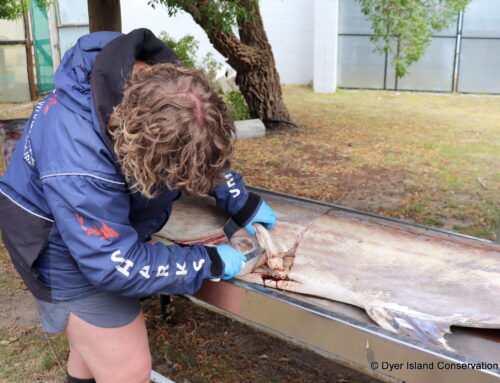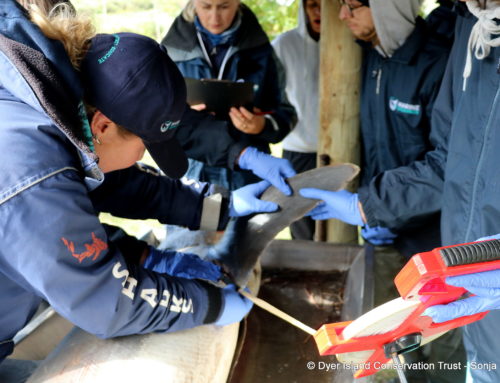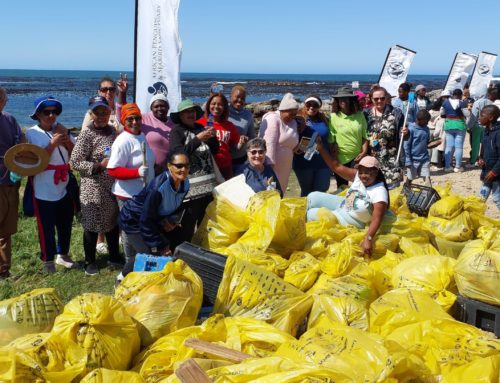Shark tagging programme update
April 20, 2011 by dyertrust
March and April have been really exciting months with regards to the DICT white shark tagging programme.
We left off on this blog last time introducing Nina our fourth tagged 2.3m female shark. After tagging her in the shallows at the end of January, she made her way to Dyer Island where we managed to gain plenty of interesting hours of tracking data on her. Nina displayed some fascinating behaviour and after spending the whole of February and half of March following her whereabouts in the bay we decided that we finally had enough hours on her. We then successfully managed to retrieve our acoustic transmitter and stored it away for further use. Thanks Nina for a different perspective on what female white sharks can do in the area of Gansbaai!
Next, the decision was made to go and tag a male shark at Dyer Island. Until April, only females had been tagged during the programme. We had a wish list of male sharks we would ideally like to tag. Top of the list was a 3.5m male whom we know returns to Gansbaai each winter via our photo id database, and cage diving encounters. This particular individual had previously been satellite tagged in Gansbaai by Dr Ramon Bonfil et al. During that, time the male shark proceeded to make his way offshore from Gansbaai in a south westerly direction before heading off towards the De Hoop nature reserve East of Cape Agulhas, approximately 60km away. Knowing his distinctive fin very well, and already having a bit of an insight into his large-scale movements, we were interested to see exactly how he behaves on a fine scale basis whilst in the bay of Gansbaai. At sunrise April 11th myself,Oliver Jewell, Tami Kaschke (our third time return volunteer from Nebraska, USA) and Max from the UK headed out on Lwazi our research boat to set out a chum slick in Shark Alley. It was a grey foggy morning with very little wind. Unbelievably the first shark to arrive at our boat was the exact male described above-the ideal individual we were hoping for, so we made the decision to deploy a transmitter and go follow him straight away!
Now already a week later, we have over 27 hours of tracking on him including two nights. We can confirm that this male shark has shown us some of the most fascinating and unexpected behaviour around the Dyer Island system! He has completely opened our minds up to the way these predators hunt around the Geyser Rock seal colony.
Furthermore, his persistent stalking behaviour of the Cape fur seals allowed us to witness the most spectacular predation of a juvenile fur seal next to Geyser Rock (the second spectacular kill we have witnessed off Lwazis bow during the tracking program!).
As we track all of our sharks we also take water samples, environmental and observational data. The team and I very much look forward to communicating more information on Zane-Gibbs and his where abouts in Gansbaai very soon! He has not yet visited a cage diving boat whilst we have been tracking him.
SAMSS

The conference was a huge success, and I feel it is always crucial for marine scientists from different marine backgrounds to communicate. This conference only happens every three years, and the progression of the SA oceanograpical, fisheries and estuarine research was interesting to see. Climate change was a big theme throughout the conference along with invasive species and ecosystem based modelling. After the scientific presentations, valuable workshops were held such as the OTN telemetric network proposed for the entire SA coastline. Guest speaker and scientist Dale Webber visited from Vemco Canada explaining in detail the mechanisms behind acoustic telemetry and the best products to be used for different types of marine fauna.
All in all a very worthwhile get together which Katja, myself and the DICT team will benefit a lot from!




